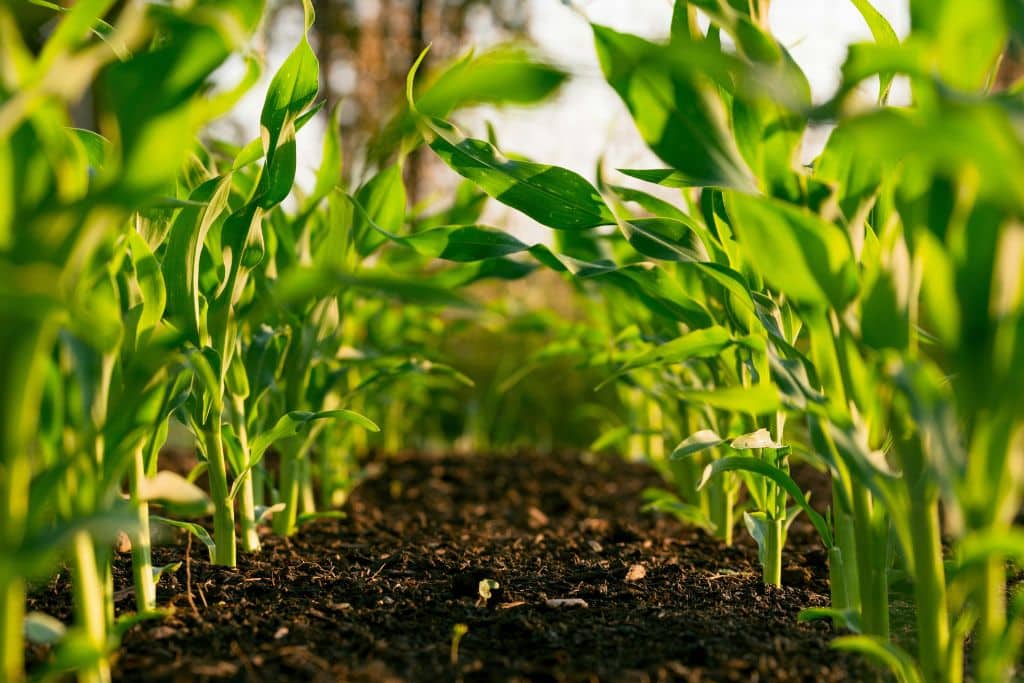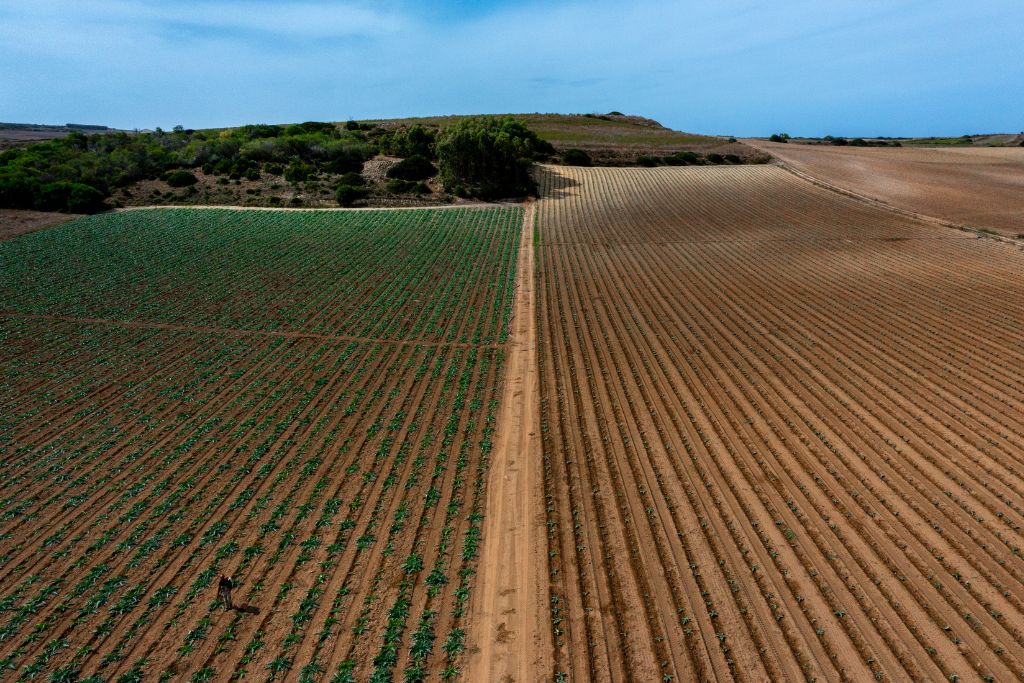Revolutionizing farming across the US, regenerative agriculture is a new and innovative way to cultivate produce. Emerging from health and wellness publisher Robert Rodale, regenerative agriculture “… create[s] farm systems that work in harmony with nature to improve quality of life for every creature involved.” However, despite such positive advancements in organic food production, many racialized groups still experience a lack of food security and food sovereignty. Approximately 23% of African Americans in the US experience some level of food insecurity, nearly two-and-a-half times more than non-racialized Americans. This begs the question: can regenerative agriculture combat food insecurity and promote food sovereignty among African American communities in the US?
—
What Is Regenerative Agriculture?
Diverging from industrial agriculture practices, regenerative agriculture introduces a sustainable and regenerative process of yielding crops. Straying from food production methods, which heavily rely on chemicals, pesticides, and environmental degradation, regenerative agriculture provides an adaptable way to achieve organic food growth.
Drawing from the Rodale Institute, Robert Rodale first created the term “regenerative organic” to describe “a holistic approach to farming that encourages continuous innovation and improvement of environmental, social, and economic measures.” However, the fundamental principles behind regenerative agriculture have long existed in the US, with ancestral roots in Indigenous and African cultures.
Backed by decades of scientific research and practical application, regenerative agriculture utilizes several unique strategies, including frequent crop rotation, managing water usage, planting cover crops, and integrating animals in production. This gives rise to the regenerative process of regenerative agriculture, where the soil is supposed to regenerate, replenish, and repair rather than degrade.
You might also like: The Future of Farming: Can We Feed the World Without Destroying It?
Racial Inequality in Agriculture and Food Insecurity
When considering agriculture in its entirety, it is important to examine the social and cultural aspects that govern the practice. According to McKinsey & Company, African American communities are drastically disconnected from the processes of farming and food production. Despite various contributions given in the past, African American farmers are largely excluded from cultivating the land. Within the last century, African Americans went from representing 14% of American farmers to roughly 1.4% today.
Drawing from the academic article [Re]Integrating Spaces: The Color of Farming, Angela Harris argues that “American farming is a white thing … [and] a site of national race making.” Harris reveals that farming and whiteness have been firmly attached since the colonial period. In seeking to colonize the “wilderness” and “emptiness” of the New World, agriculture signified a return to the Garden of Eden and a renewed connection to the earth. This revitalization sparked the emergence of “democratic agriculture” in the early 19th century.
According to Harris, democratic agriculture is the ownership of property “[which] provided the economic independence for a man to speak, debate, and vote his conscience rather than attempting to please a landlord or master.” Overall, these democratic values brought major economic freedoms for white farmers.
Further reflected in a quote by Thomas Jefferson, US president from 1801 to 1809, the benefits of democratic agriculture marked a respected form of nationalism: “Cultivators of the earth are the most valuable citizens. They are the most vigorous, the most independent, the most virtuous, and they are tied to their country, and wedded to its liberty and interests by the most lasting bonds.” As a result, these agrarian ideals significantly influenced federal law, policy, and African-American rights to food.
Bridging the Gap: Regenerative Soil and the 7 P’s
Now that we have uncovered the complex relationship between African American communities, food ownership, and food insecurity, we can try and answer the question of whether regenerative agriculture is an effective solution to the problem.
According to Rodale, regenerative agriculture is a revolutionary socio-environmental tool because it provides an intrinsic link between the environmental process of soil regeneration and the emotional process of human well-being. This occurs through the so-called “7 P’s”, seven environmental elements needed for soil regeneration alongside the seven benefits of emotional well-being.

Using Rodale’s findings, it can be argued that the gap between African American communities and food sovereignty can be merged through the 7 P’s:
1. Pluralism
- Implementing diverse plant types throughout the regenerative system to boost biodiversity.
- Biodiversity growth equals diversity of personal experiences, business ownership, and multiculturalism.
2. Protection
- Using protective “cover crops” to safeguard the soil from erosive elements.
- Soil protection equals resilience during periods of personal hardship and difficulties through the quality of businesses.
3. Purity
- Utilizing pure resources in the production process, which does not include pesticides, herbicides, monoculture, and input-intensive agriculture.
- Cultivating pure food growth also cultivates pure lifestyle habits, which include positive thinking, happiness, and success.
4. Permanence
- Incorporating varying plants with deep root properties, such as perennials and plants.
- Healthy rooted soil translates into positivity, connection, and spiritual renewal taking root in human lives.
5. Peace
- Supporting the natural cycle of growth and cultivation without rigorous disruption.
- Encouraging nature’s natural growth patterns causes an internal and external sense of peace that replaces thoughts of negativity.
6. Potential
- Supporting the potential for naturally developing nutrients to support the plants and soil further.
- The potential of soil nutrients increases resources that become easily accessible to more people.
7. Progress
- Achieving healthy, nourished soil that contains structure, porosity, and water retention.
- The health and well-being of overall communities elevate and the joy of its inhabitants increases.
Rodale’s “7 P’s” suggest that regenerative agriculture has the potential to foster the inclusion of African Americans in farming and food cultivation. With its interconnected environmental and emotional advantages, regenerative agriculture might be a beneficial solution in promoting food security and food sovereignty among African American communities.
A notable example of this is found at Soul Fire Farm. Owned by Leah Penniman and Jonah Vitale Wolff in Petersburgh, New York, Soul Fire Farm implements regenerative methods to restore 80 acres of mountainside farmland. Mirroring Rodale’s “7 P’s”, Soul Fire Farm strategically employs polyculture, cover crops, compost material, use of native species, no-tilling, and seed keeping on their property. Relying on regenerative agricultural practices, Soul Fire Farm is committed to “uprooting racism and seeding sovereignty in the food system [and] to share skills on sustainable agriculture, natural building, spiritual activism, health, and environmental justice.”
However, although Soul Fire Farm appears to be successful in using regenerative agriculture to combat food insecurity and food sovereignty in their community, how can such practices become a prominent reality in the US?
Going Forward
The findings presented above suggest that regenerative agriculture might be a beneficial solution in promoting food security and food sovereignty among African American communities.
Going forward, the first step in regenerative agriculture is developing farming programs for African Americans at the local level, especially for African American farmers and their communities. A potential pathway to achieving this includes creating more community-led farming organizations, much like Soul Fire Farm, that partner with African American farmers to encourage, instruct, and facilitate regenerative agriculture. However, such community-led organizations cannot exist without substantial financial assistance. Therefore, these organizations should pursue government funding, non-profit organizations, and private companies that share in uplifting African Americans in regenerative agriculture. These might include the United States Department of Agriculture Farm Service Agency, the Southeastern African-American Farmers’ Organic Network, and TPP Capital Holdings.
Lastly, and most importantly, these small organizations must solidify a strong community outreach strategy that promotes the technical skills of land ownership, regenerative farming, and its positive socio-economic impacts on African American communities. With this, regenerative agriculture and its intrinsic and extrinsic benefits can become more accessible to all, providing opportunities for growth and cultivation across the US. By doing so, African American communities can regain a sense of personal connection, ownership, and security from nurturing the land.
This story is funded by readers like you
Our non-profit newsroom provides climate coverage free of charge and advertising. Your one-off or monthly donations play a crucial role in supporting our operations, expanding our reach, and maintaining our editorial independence.
About EO | Mission Statement | Impact & Reach | Write for us


















